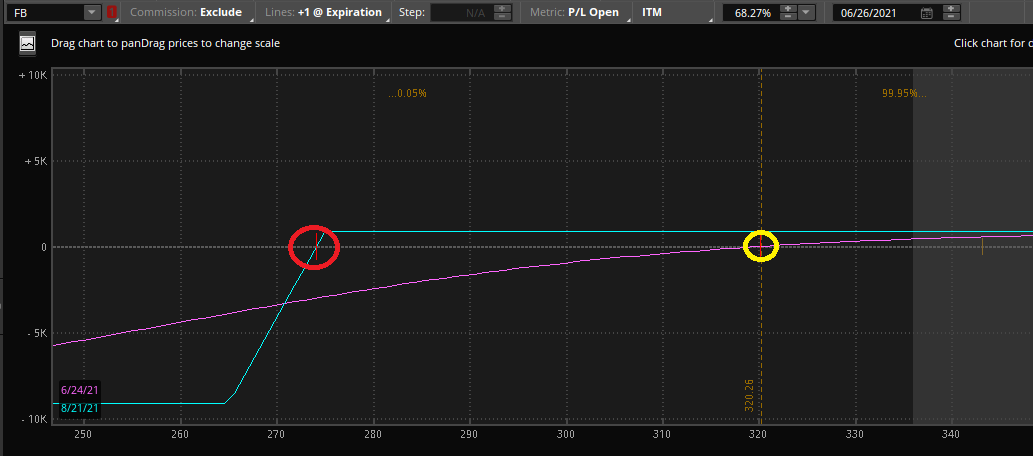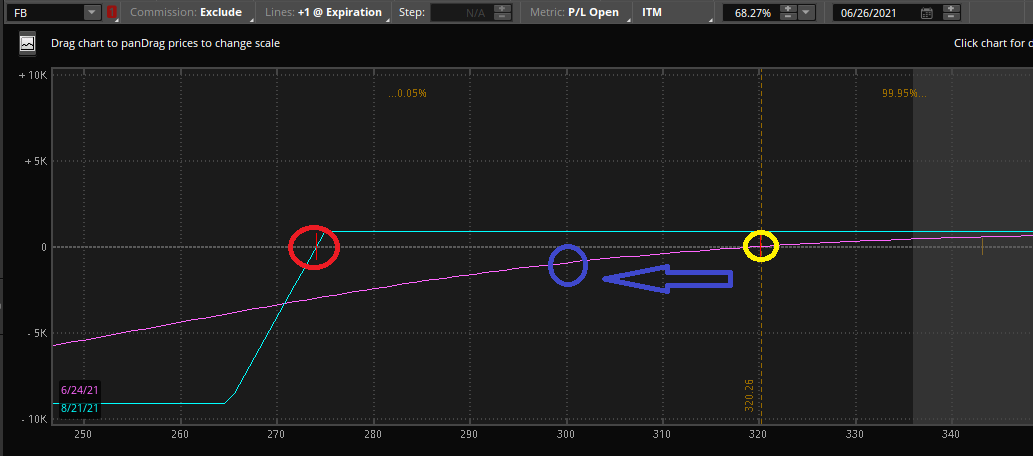

A bull put spread exit strategy is essential before you enter a trade.
Getting into a bull put spread is the easy part. It’s what comes next that is hard.
Today we will look at how to exit a bull put spread.
Contents
- Introduction
- Bull Put Spread Example
- When To Exit A Bull Put Spread
- Do I Need To Close My Bull Put Spread?
- Why Not Just Sell The Puts?
- Concluding Remarks
Introduction
Bull put spreads, also known as put credit spreads, are a great way to express a moderately bullish view on an underlying security while collecting a premium for doing so.
Despite this, placing a trade is only half the battle. You still need to know when to exit.
Exiting trades is, in fact, the most challenging part of the trade itself. You will seldom be happy with your exit.
Having a set of rules you can follow allows you to make the exit more mechanical and less stressful.
Let’s review some of my favorite bull put spread exit strategies.
Bull Put Spread Example
When we place a bull put spread, we sell an out-of-the-money (OTM) put option then buy a further OTM put.
I like to sell the 15 delta as the short leg of my bull put spread, then buy a further OTM option as insurance.
This leads to a structure, as shown with the below example on Facebook

Here I have placed a 15-delta bull put spread on Facebook.
Our position starts at inception at the yellow circle.
We are moderately bullish and have a little bit of long delta as well as short volatility.
We will make money in 3 scenarios – if the stock moves up, if the stock stays range-bound or if the stock moves down slowly.
Of course, because of our high probability of profit, we have a significant drawdown if none of these scenarios happen, and the stock moves quickly downward.
Though, unlike a simple short put, this is a risk-defined strategy.
In this case, our max loss is capped at $9,000.
Despite this, we will rarely experience anywhere near this max loss if we manage and proactively exit the position, as explained below.
When To Exit A Bull Put Spread
Let us start with the worst situation.
The price of Facebook goes down quickly.
We begin experiencing losses as we are losing on both delta and volatility.
In this case, I like to cut the position quickly, usually after the short leg of the put crosses the 25-delta point. At this stage, I have twice the risk I did when initially placing the trade.
Instead of hoping the stock goes back up, it is better to take pre-emptive action.
While this does mean taking a lot more losing trades, it helps prevent more significant drawdowns and avoids anything near the max loss on the trade.
Another way of cutting losses is setting a stop loss for double the amount of premium received.
In the example above, we received $100 premium for selling the spread; then I could set a stop at $300. Again, to prevent large losses.

Preventing large losses is not as easy to do as it seems.
In the example of the Facebook position above, the price has dropped from $320 to $300.
Adjust or Wait?
We can see how tempting it is to leave the position on at this point.
After all, we have so much leeway till our expiration break-even point at the red circle.
Odds are, if we leave it, we will receive our full premium, but instead of doing nothing and synthetically doubling down on your position, it is more intelligent from a risk perspective to take the loss and move on to the next trade.
Thankfully, most of the time, the position will move in our favor.
In this case, I like to take profits at 50%.
This will lead to an even higher percentage of profit than letting the position run to expiry.
It also helps to establish a new position and keep risk exposures constant.
For example, if we have received 90% of the premium from the trade, the trade has little value left. Instead of watching yourself collect the last few pennies, you can close out the position and establish a new one with the exposures you want.
Doing so adds to the long-term profitability of the portfolio.
A third scenario that happens occasionally is that the position will move down at a slower pace, and our profit and loss will be left almost flat as we near expiry.
If this happens, the gamma increases drastically, meaning more significant swings in our daily P&L.
In this case, having a reduced profit target or getting out entirely and establishing a new position is smart.
As the saying goes, theta cuts, but gamma kills.
Do I Need To Close My Bull Put Spread?
These are all ways of managing the different dynamics of the risk return nature of bull put spread that I enjoy using.
Despite this, you are welcome to explore different strategies.
There is no requirement that you close out a bull put spread; you also have the possibility of just letting them expire.
If they are out-of-the-money or if both legs are in-the-money, this requires doing nothing.
This may save you some money in commissions.
Though as a note, when options are ITM, some brokers charge assignment fees that can outweigh commission costs. Being charged $10 in assignment fees makes holding little sense when commissions are only a few dollars.
If one leg ends ITM, letting it expire is generally not smart as you will be assigned just on your short leg.
Assuming you have no interest in holding long shares of the position, you should close out the short leg on expiration day or short the number of shares beforehand that will be assigned.
Another disadvantage of waiting till expiry is if the stock gets pinned near your strike.
In this case, you are not sure whether shares will be assigned and could face unintended risk over the weekend.
If this occurs, it is again better to close out the position beforehand.
Why Not Just Sell The Puts?
Arguably we could decide to sell the puts instead for a higher credit and manage our exits.
This will generally work very well but does have a drawback. If the stock opens 30% lower overnight, you would have had no opportunity to hedge and will be dealing with losses higher than the max loss of the bull put spread.
While these events are often discarded as impossible, crises such as the Covid crash of 2020 can show how quickly a trade can move against you.
So overall, while a higher credit will be received for a put vs a put spread, exiting a put spread for a loss is a lot more worry free when not facing unlimited risk to the downside.
So, while selling puts on their own is a reasonable strategy, make sure you are comfortable with some outsized losses, and even more critical than the put spread, make sure that you exit or hedge when the trade moves against you.
Concluding Remarks
Bull put spreads can be a great vehicle to trade for generating passive income in most market regimes.
Exiting positions can be a lot more challenging than entering them as each trade evolves differently.
By being systematic and having a set of rules for closing positions, you can help prevent larger drawdowns and keep a more constant risk exposure.
Having given criteria for exit also helps avoid the dreaded what-if.
It is never nice to think that you could have either cut the position earlier or later and made more money regardless of your decision.
Having a set of criteria for exiting a position can help you stay disciplined and sleep easily.
Do you have a specific way you like to trade, manage, and exit bull put spreads?
If you do, I would love to hear from you below in the comments!
Trade safe!
Disclaimer: The information above is for educational purposes only and should not be treated as investment advice. The strategy presented would not be suitable for investors who are not familiar with exchange traded options. Any readers interested in this strategy should do their own research and seek advice from a licensed financial adviser.










